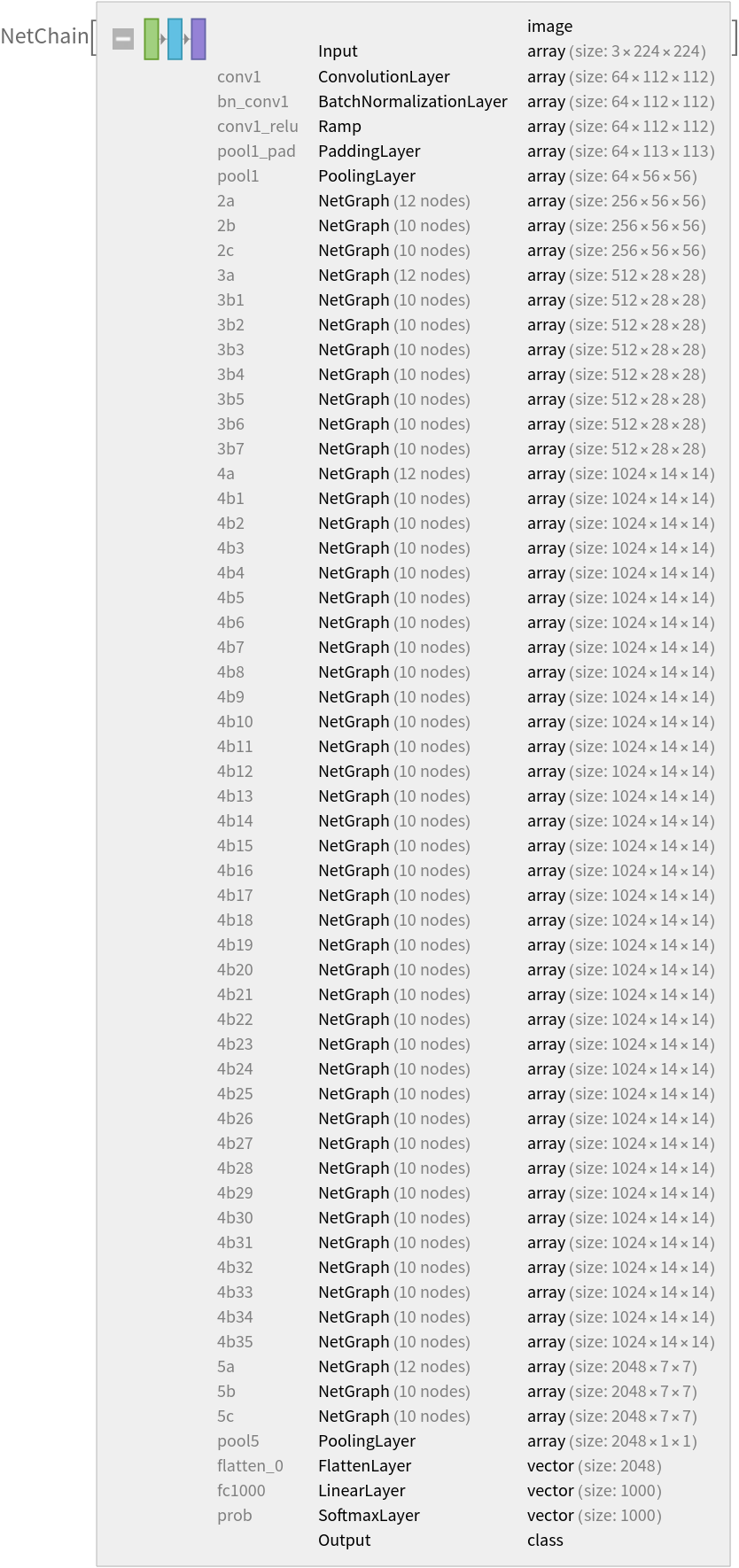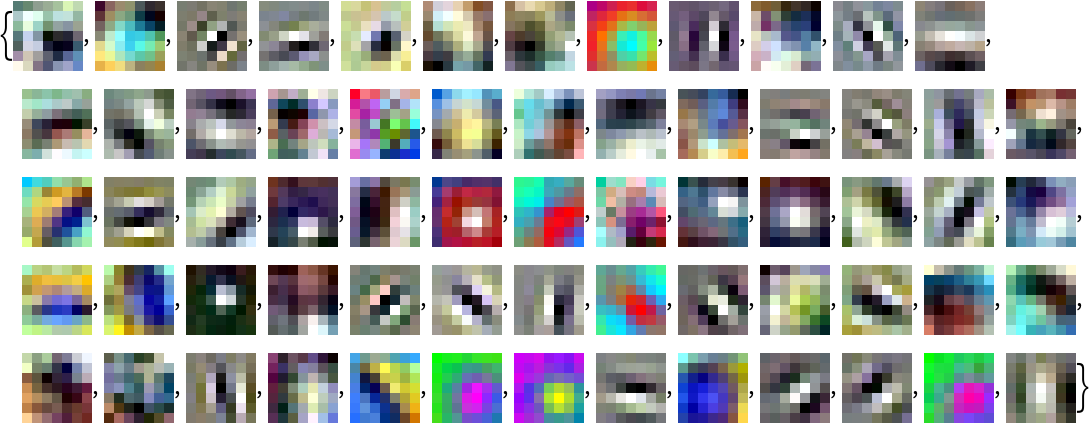Resource retrieval
Get the pre-trained net:
Basic usage
Classify an image:
The prediction is an Entity object, which can be queried:
Get a list of available properties of the predicted Entity:
Obtain the probabilities of the ten most likely entities predicted by the net:
An object outside the list of the ImageNet classes will be misidentified:
Obtain the list of names of all available classes:
Feature extraction
Remove the last three layers of the trained net so that the net produces a vector representation of an image:
Get a set of images:
Visualize the features of a set of images:
Visualize convolutional weights
Extract the weights of the first convolutional layer in the trained net:
Visualize the weights as a list of 64 images of size 7x7:
Transfer learning
Use the pre-trained model to build a classifier for telling apart images of dogs and cats. Create a test set and a training set:
Remove the linear layer from the pre-trained net:
Create a new net composed of the pre-trained net followed by a linear layer and a softmax layer:
Train on the dataset, freezing all the weights except for those in the "linearNew" layer (use TargetDevice -> "GPU" for training on a GPU):
Perfect accuracy is obtained on the test set:
Net information
Inspect the number of parameters of all arrays in the net:
Obtain the total number of parameters:
Obtain the layer type counts:
Display the summary graphic:
Export to MXNet
Export the net into a format that can be opened in MXNet:
Export also creates a net.params file containing parameters:
Get the size of the parameter file:
The size is similar to the byte count of the resource object:

![(* Evaluate this cell to get the example input *) CloudGet["https://www.wolframcloud.com/obj/eec4deed-6fad-47a8-a8ee-73ed7c43d425"]](https://www.wolframcloud.com/obj/resourcesystem/images/3df/3dfe5a8d-b14c-4a75-b53c-8783c103d23d/2ad280f3a9a3c0ca.png)

![(* Evaluate this cell to get the example input *) CloudGet["https://www.wolframcloud.com/obj/f73e1d3b-580a-4ad1-b233-ea061c36e244"]](https://www.wolframcloud.com/obj/resourcesystem/images/3df/3dfe5a8d-b14c-4a75-b53c-8783c103d23d/4fbd60c21ef656b8.png)

![(* Evaluate this cell to get the example input *) CloudGet["https://www.wolframcloud.com/obj/816302fc-46c6-44b5-9891-a43abe3e04b2"]](https://www.wolframcloud.com/obj/resourcesystem/images/3df/3dfe5a8d-b14c-4a75-b53c-8783c103d23d/015aaef6751b6d56.png)
![EntityValue[
NetExtract[
NetModel["ResNet-152 Trained on ImageNet Competition Data"], "Output"][["Labels"]], "Name"]](https://www.wolframcloud.com/obj/resourcesystem/images/3df/3dfe5a8d-b14c-4a75-b53c-8783c103d23d/522033d3632a99e8.png)


![(* Evaluate this cell to get the example input *) CloudGet["https://www.wolframcloud.com/obj/35170516-a42e-4df3-8db2-0292c69b6cff"]](https://www.wolframcloud.com/obj/resourcesystem/images/3df/3dfe5a8d-b14c-4a75-b53c-8783c103d23d/48f63fb1501f871b.png)


![(* Evaluate this cell to get the example input *) CloudGet["https://www.wolframcloud.com/obj/be97c07f-e5e1-44a6-8099-c5017d2d7e78"]](https://www.wolframcloud.com/obj/resourcesystem/images/3df/3dfe5a8d-b14c-4a75-b53c-8783c103d23d/238d1cf424c6a05c.png)
![(* Evaluate this cell to get the example input *) CloudGet["https://www.wolframcloud.com/obj/acdb90a5-4bd9-4018-b598-e3d1699c980f"]](https://www.wolframcloud.com/obj/resourcesystem/images/3df/3dfe5a8d-b14c-4a75-b53c-8783c103d23d/1002029339bd0ecb.png)

![newNet = NetChain[<|"pretrainedNet" -> tempNet, "linearNew" -> LinearLayer[], "softmax" -> SoftmaxLayer[]|>, "Output" -> NetDecoder[{"Class", {"cat", "dog"}}]]](https://www.wolframcloud.com/obj/resourcesystem/images/3df/3dfe5a8d-b14c-4a75-b53c-8783c103d23d/30389b413470144f.png)


